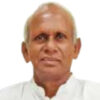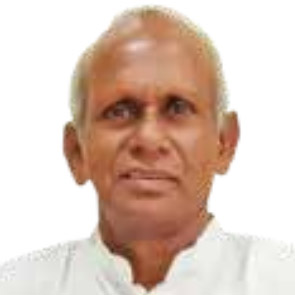The Zero contains nothing, hence it cannot be divided further. But either side of it can have a number added to it. After then, it gains infinite worth. Zero is nothing, but the number is everything. Despite being nothing, zero has an endless value. It is the same undivided zero forever. The value addition, however, only occurs when there is a zero since it is the value’s centre, much like a hub in a wheel holds spokes. It is unending without the invisible zero, just as spokes cannot stand alone without a hub. Thus, the infinite has always existed and will continue to exist forever.
This number does not exist but exists, it exists.
It is zero, it is pujyam, poornam, shunyam.
Without it all life is meaningless.
All life is zero, yet all zero is life.
Evolution only provides further value; it is like adding a number to zero. It has a positive and a minus. When it loses its form, it is negative; when it gains a new form, it is positive. The entire cosmic evolution is blended with plus and minus movements. The zero in this plus-minus cosmic progression is impossible to find. Due to the speed at which evolution is manifesting itself, the zero state (before the creation of matter) cannot be realized. Only massless particles, like the photons that make up light and are produced by stars and galaxies, can move at a speed of 300,000 kilometers per second (186,000 miles per second), according to Einstein. The matter moves more slowly than this. The speed of the earth’s surface at its equator is about 1000 miles per hour, whereas its orbit around the sun is moving at 490,000 miles per hour (220 kilometers per second). The motion of the other planets in our solar system varies in pace. Similarly, there are billions of galaxies and an endless number of solar systems within each galaxy. It is not within the purview of physical science or spiritual science.
The zero state in life is a myth, and that is the argument to be made. It doesn’t even exist. The birth of matter and its unending flow and expansion completely obscure it. The nuanced nature of the mind is similar. When it’s put into practice, it gets gross. Compared to ether, the medium of electricity, it is finer. It advances and retreats. It is a negative when it moves backward and a plus when it advances forward. Here, the past serves as both a negative and a positive by extending the present into the future. Like cosmic matter, our ideas move in this direction. Human thought virtually travels across timelessness, much like cosmic matter.
Thoughts enter people’s minds with breakneck speed, engender comparable thoughts in them, and travel in all directions. A thoughtless state is thus analogous to a zero state, which has been irretrievably lost. It resembles, at the very least, a cease-fire between the plus and minus movements of matter at cosmic level and thought at human level. There can never be a completely motionless state in which matter stops moving and thoughts vanish completely. That is terrible! Human life ends and creation stops.
There is no such thing as a zero state in meditation at the human level, contrary to what some spiritual gurus assert, just as a zero state is lost forever in the cosmos. The Samadhi that the yogic philosophy refers to is a truce rather than the zero condition (before the creation). The pause between two thoughts is the ceasefire. In the strictest sense, Samadhi is unique. Yet, it’s a myth and a fantasy, all at once. However, the distance (i.e., the pause) between thoughts can be intentionally increased. Similar to how the distance between galaxies and stars in the cosmos can become longer depending on gravitational factors, Samadhi-like states of calm should, however, occur spontaneously and without conscious effort.
Any attempts will be harmful. Even the sages’ Samadhi state (the state of ceasefire) is a pause (space between the ceaseless flow of thoughts) that can last for a long time, say for hours or days but not forever. They return to their normal state with the same determination. Samadhi is what it is. Unfortunately, there has been a lot of writing and fuss made about it!
One day, the young novice approached the ordinary man intending to pick his brain. “Get lost if you have anything to say,” said the ordinary man on seeing the young man who stood in silence, confused. When the ordinary man saw the young man standing in quiet and confusion, he remarked, “If you don’t have anything to say, stay where you are.” After a few minutes passed, the young novice recovered from his condition of confusion, yet he remained silent. Neither of them felt the other’s presence while they carried on their tasks.





















